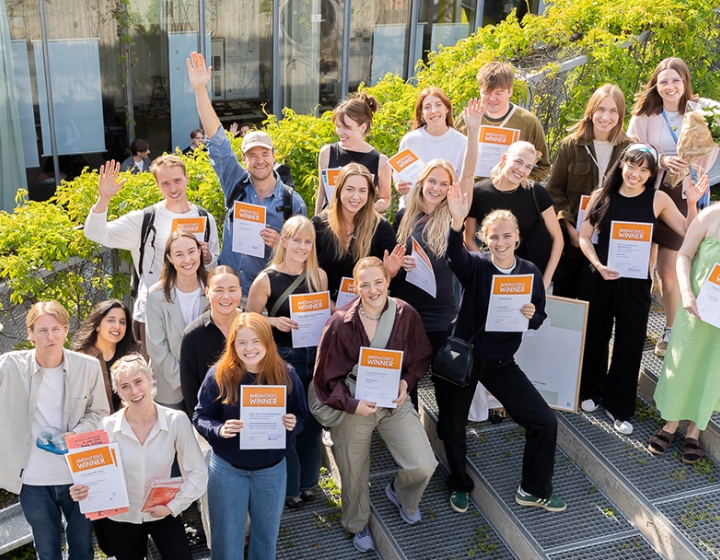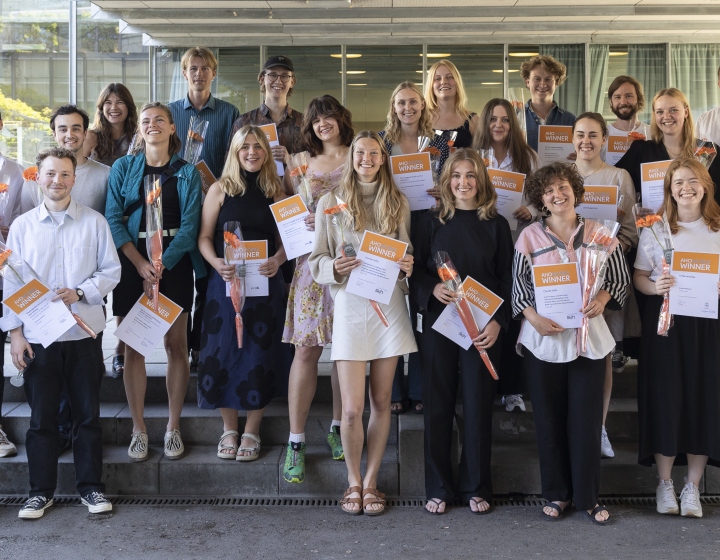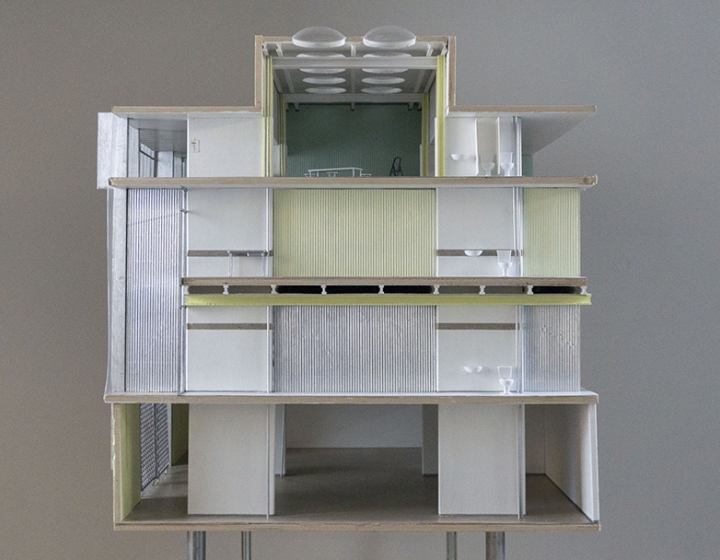New book: "Model Perspectives"
Bjørn Normann Sandaker has co-authored «Model Perspectives. Structure, Architecture and Culture” with professors Mark R. Cruvellier and Luben Dimcheff at Cornell University, New York. The book is published by Routledge and appeared for sale earlier this fall.
“This book contains a unique collection of various perspectives on the relationship between structures and the forms and spaces of architecture. As such it provides students and professionals alike with an essential sourcebook that can be mined for visual inspiration as well as for textually rich and authoritative insight into the links between structure, architecture, and cultural context. The chapters address fundamental structural elements and systems: columns, walls, beams, trusses, frames, tensile structures, arches, domes and shells.
Each chapter is subdivided into two parts:
• The essays – introduce the chapters with the reprinting of a curated set of essays and excerpts by various authors that uniquely address how particular structural elements or systems relate in essential fashion to architectural design concepts.
• The model studies – physical models of the overall structural systems of several notable contemporary buildings from Europe, North and South America, Africa and Asia are illustrated with large photographs, detail close-ups, and views of their external forms and internal spaces that establish the exceptional qualities of these projects in connecting structural form to architectural design objectives. Mosaic layouts complete the chapters with a collection of photographs of yet more models whose particular details and unique features serve to extend the visual repertoire of the structural type being considered.
The combination, juxtaposition and mutual positive reinforcement of these two collections, one largely textual and the other imagebased, provides the reader with unique and multifaceted insights into how structural forms and systems can be related to architectural design intentions. Conveyed by a strong and deliberate graphical design format, this assembly of materials gets to the very essence of structures within the context of architecture, and will inspire students and practitioners alike to make strategic design decisions”
Some books are treasure troves – ensembles of deep human experiential research – which need to be kept close to hand. This book is one such treasure. The combination of selected texts with the constructed models becomes the thoughtfully constructed intellectual structure within which to navigate these essential topics.
– Yvonne Farrell & Shelley McNamara, Directors, Grafton Architects
During the past decades, architecture has been dominated by an interest in expressive singular forms, often facilitated bycomputerized design and methods of calculation, novel material technologies, and robotic methods of production. The book Model Perspectives: Structure, Architecture and Culture returns architectural thinking back to its tectonic principles
and elementary syntax. It also emphasizes the essential cultural connectedness of the art of building; architectural meaning cannot be invented, as it is bound to reflect the human existential and mental reality. All true architectural meaning echoes tradition, and the most radical artistic innovations become part of this esteemed continuum of tradition.
– Juhani Pallasmaa, architect, writer, professor emeritus, Helsinki University of Technology (Aalto University, School of Art Art, Design and Architecture), Finland
Each chapter is subdivided into two parts:
• The essays – introduce the chapters with the reprinting of a curated set of essays and excerpts by various authors that uniquely address how particular structural elements or systems relate in essential fashion to architectural design concepts.
• The model studies – physical models of the overall structural systems of several notable contemporary buildings from Europe, North and South America, Africa and Asia are illustrated with large photographs, detail close-ups, and views of their external forms and internal spaces that establish the exceptional qualities of these projects in connecting structural form to architectural design objectives. Mosaic layouts complete the chapters with a collection of photographs of yet more models whose particular details and unique features serve to extend the visual repertoire of the structural type being considered.
The combination, juxtaposition and mutual positive reinforcement of these two collections, one largely textual and the other imagebased, provides the reader with unique and multifaceted insights into how structural forms and systems can be related to architectural design intentions. Conveyed by a strong and deliberate graphical design format, this assembly of materials gets to the very essence of structures within the context of architecture, and will inspire students and practitioners alike to make strategic design decisions”
Some books are treasure troves – ensembles of deep human experiential research – which need to be kept close to hand. This book is one such treasure. The combination of selected texts with the constructed models becomes the thoughtfully constructed intellectual structure within which to navigate these essential topics.
– Yvonne Farrell & Shelley McNamara, Directors, Grafton Architects
During the past decades, architecture has been dominated by an interest in expressive singular forms, often facilitated bycomputerized design and methods of calculation, novel material technologies, and robotic methods of production. The book Model Perspectives: Structure, Architecture and Culture returns architectural thinking back to its tectonic principles
and elementary syntax. It also emphasizes the essential cultural connectedness of the art of building; architectural meaning cannot be invented, as it is bound to reflect the human existential and mental reality. All true architectural meaning echoes tradition, and the most radical artistic innovations become part of this esteemed continuum of tradition.
– Juhani Pallasmaa, architect, writer, professor emeritus, Helsinki University of Technology (Aalto University, School of Art Art, Design and Architecture), Finland
Routhledge
AHO library
---
Mark R. Cruvellier is the Nathaniel and Margaret Owings Professor and Chair of the Department of Architecture at Cornell University, USA. He teaches and conducts research in the area of structural form and behavior considered within the context of architecture; he is co-author of The Structural Basis of Architecture, 2nd ed. (Routledge, 2011) with Bjørn N. Sandaker and Arne P. Eggen. Cruvellier is a professional structural engineer and has been involved in built projects from skyscrapers in New York City to wilderness footbridges in British Columbia.
Bjørn N. Sandaker is Professor of Architectural Technology at The Oslo School of Architecture and Design (AHO), Norway, and Adjunct Professor at the Norwegian University of Science and Technology (NTNU) in Trondheim, Norway. His particular academic interest focuses on the borderline between architecture and structural engineering; he is author of On Span and Space: Exploring Structures in Architecture (Routledge 2008) and co-author of The Structural Basis of Architecture, 2nd ed. (Routledge 2011).
Luben Dimcheff is the Richard Meier Assistant Professor in the Department of Architecture at Cornell University, USA, where he teaches studio as well as courses that are focused on the visualization and analysis of space. He leads a design and architectural practice based in New York City with projects built internationally.
AHO library
---
Mark R. Cruvellier is the Nathaniel and Margaret Owings Professor and Chair of the Department of Architecture at Cornell University, USA. He teaches and conducts research in the area of structural form and behavior considered within the context of architecture; he is co-author of The Structural Basis of Architecture, 2nd ed. (Routledge, 2011) with Bjørn N. Sandaker and Arne P. Eggen. Cruvellier is a professional structural engineer and has been involved in built projects from skyscrapers in New York City to wilderness footbridges in British Columbia.
Bjørn N. Sandaker is Professor of Architectural Technology at The Oslo School of Architecture and Design (AHO), Norway, and Adjunct Professor at the Norwegian University of Science and Technology (NTNU) in Trondheim, Norway. His particular academic interest focuses on the borderline between architecture and structural engineering; he is author of On Span and Space: Exploring Structures in Architecture (Routledge 2008) and co-author of The Structural Basis of Architecture, 2nd ed. (Routledge 2011).
Luben Dimcheff is the Richard Meier Assistant Professor in the Department of Architecture at Cornell University, USA, where he teaches studio as well as courses that are focused on the visualization and analysis of space. He leads a design and architectural practice based in New York City with projects built internationally.



